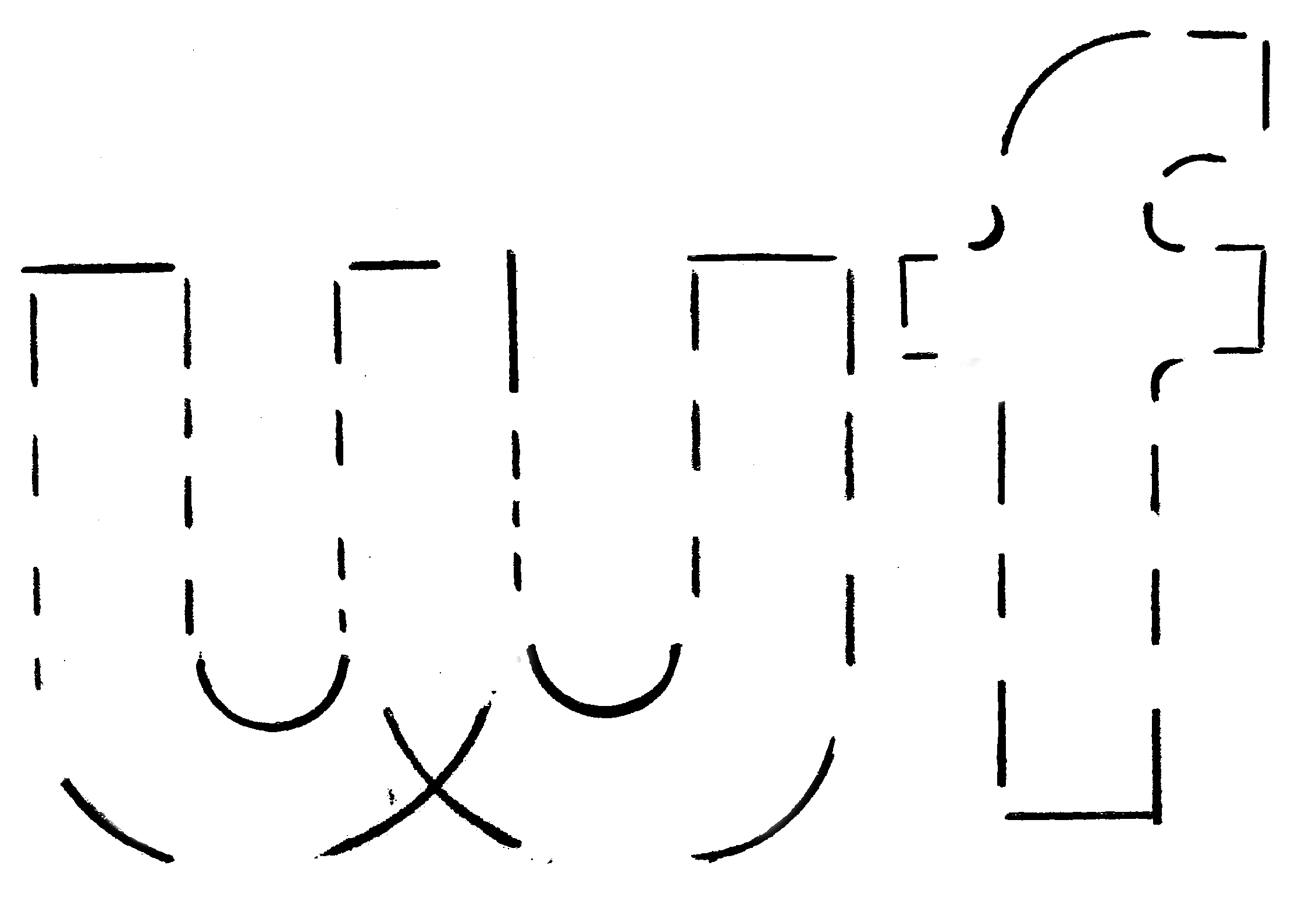Teach Me A Song
Description:
Teach Me A Song was an exhibition by artist and composer Elisa Harkins that presented a series of songs and sculptures building on her ongoing research in translation, language, preservation, and Indigenous musicology. The exhibition was structured on a series of exchanges, wherein Harkins invited Osage elder Louis Gray, Muscogee (Creek) language teacher Don Tiger, and artist Mateo Galindo to teach her a song.
Working with various textiles, Harkins embellished shawls and installed them on found stools and chairs that supported the garments as anthropomorphized sculptures. Each of these forms stood as a performer, individually voiced with speakers playing back the songs connected to each of Harkins’s collaborators. With the recordings of these songs—which varied from ceremonial, to religious, to rock and roll, to electronic music—Harkins’s practice of nation to nation sharing and trading music was presented as a means of decolonizing traditions of Indigenous musicology.
As part of the exhibition, Harkins was joined by collaborators Hanako Hoshimi-Caines and Zoë Poluch for performances of their pieces Wampum / ᎠᏕᎳ ᏗᏕᎫᏗ (2017–) at Western Front, and Radio III / ᎦᏬᏂᏍᎩ ᏦᎢ (2019) at Left of Main with plastic orchid factory.
Documents:
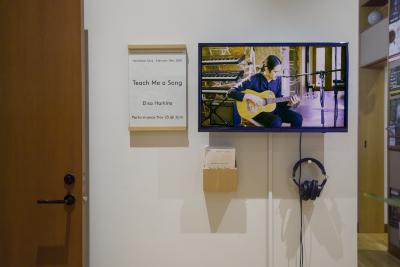
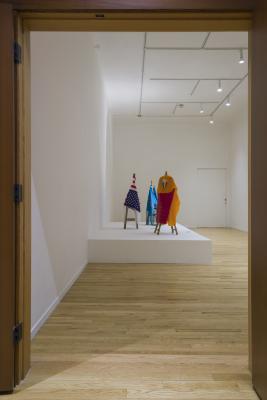
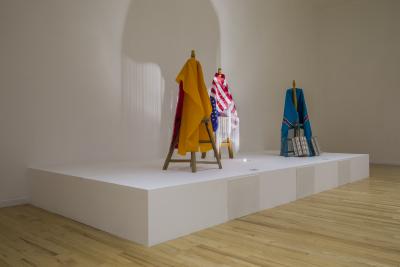
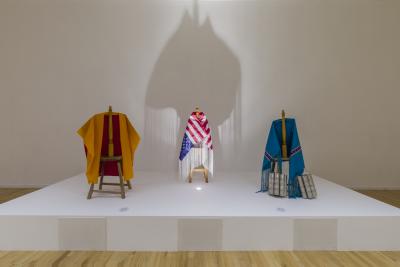
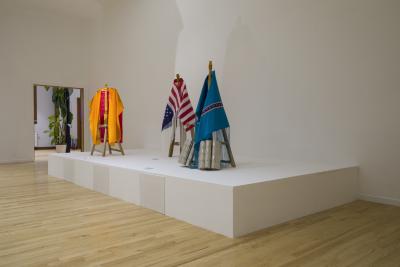
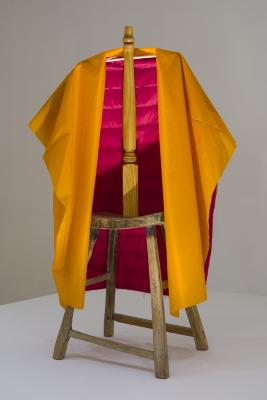
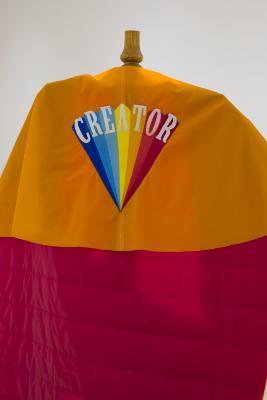
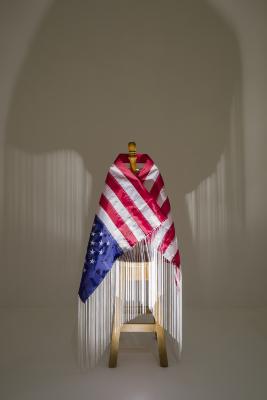
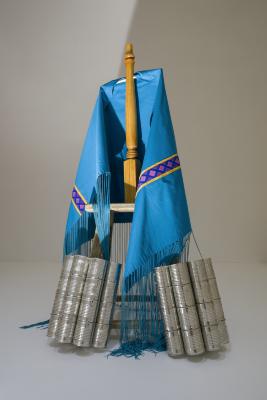
Related Events
Captions:
- Elisa Harkins: Teach Me A Song, installation view, Nov 22, 2019 – Feb 15, 2020. Photo by Angel Lynne.
- Elisa Harkins: Teach Me A Song, installation view, Nov 22, 2019 – Feb 15, 2020. Photo by Angel Lynne.
- Elisa Harkins: Teach Me A Song, installation view, Nov 22, 2019 – Feb 15, 2020. Photo by Angel Lynne.
- Elisa Harkins: Teach Me A Song, installation view, Nov 22, 2019 – Feb 15, 2020. Photo by Angel Lynne.
- Elisa Harkins: Teach Me A Song, installation view, Nov 22, 2019 – Feb 15, 2020. Photo by Angel Lynne.
- Elisa Harkins, Sunpit (2019). Photo by Angel Lynne.
- Elisa Harkins, Sunpit (2019), detail. Photo by Angel Lynne.
- Elisa Harkins, AIM Song (2019). Photo by Angel Lynne.
- Elisa Harkins, No 1. Sofke Sipper (2019). Photo by Angel Lynne.
